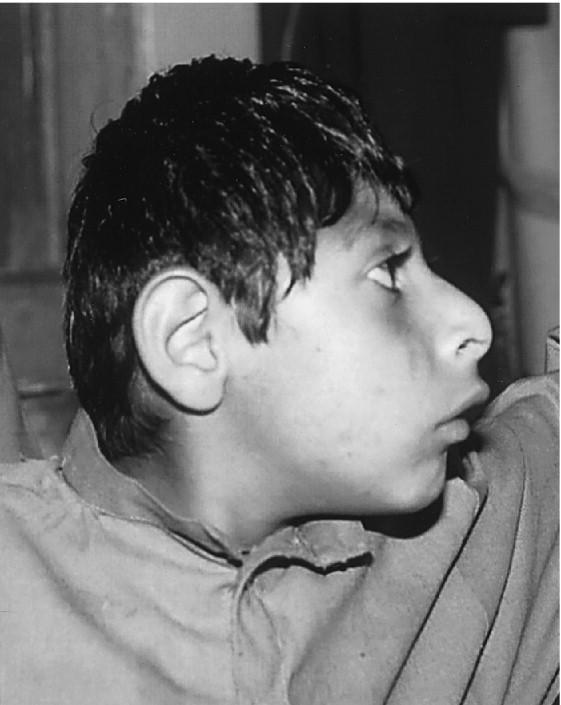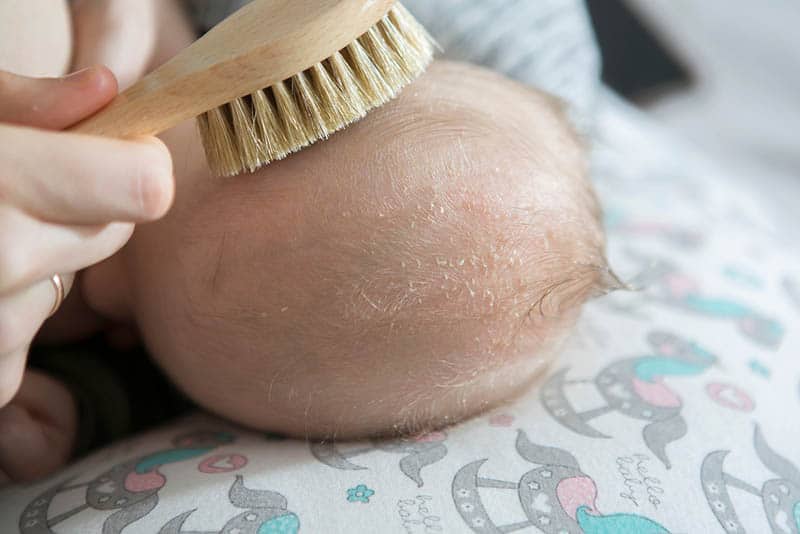Circumcised vs uncircumcised newborn
Circumcised vs. Uncircumcised - What is Circumcision?
Related Topics
Circumcision is a procedure where the foreskin (the skin that covers the tip of the penis) is removed. Circumcision isn’t required. But if parents choose this for their baby, the procedure is usually performed on the first or second day after birth in a healthy baby. However, it can be done within 10 days of birth. Circumcision is riskier and more complicated in infants older than 2 months of age, and in older boys and men.
Circumcisions are done by a doctor in a hospital or outpatient office. They also can be done at home by a hired professional as part of a religious or cultural ceremony.
During the procedure, the doctor will numb the area around the penis with a local anesthetic (medicine that numbs only a specific part of the body). This makes the procedure less painful for the baby. The anesthetic may be given as an injection or applied as a cream. The procedure takes about 20 minutes.
Making the decision about circumcision
Circumcision is a personal choice for you and your family. You will need to consider the benefits and risks of circumcision. Factors such as your culture, religion, and personal preferences may affect your decision. Talk with your doctor about the benefits and risks. He or she may be able to help you decide. You may want to make a decision about circumcision before your son is born. That way, you’ll know what to do about it while in the hospital.
The American Academy of Family Physicians (AAFP) recommends that parents talk to their family doctor about the potential benefits and risks of circumcision when making their decision.
The American Academy of Pediatrics (AAP) says the health benefits of circumcision outweigh the risks. However, the AAP does not think the benefits are great enough to recommend that all male newborns should be circumcised.
Path to improved health
If you decide to have your baby circumcised, you’ll need to follow some steps to help the penis heal.
- Gently clean the area with water every day when your baby needs a fresh diaper.
- Use mild soap and water to clean stool off of the penis. This will help prevent infection.
- If there is a bandage on the penis, it will probably fall off the next time your baby urinates. Ask your doctor whether you should leave the bandage off or if you should put a new bandage on each time you change your son’s diaper.
- Sometimes, your baby’s urine and the pressure from his diaper will irritate the newly exposed skin on the tip of the penis. This can be treated by putting petroleum ointment (brand name Vaseline) directly on the area. It will usually get better after a few days.
Healing usually takes about 7 to 10 days. Some swelling of the penis is normal. It’s also normal for a yellow discharge or coating to form over the tip of the penis. Don’t try to take this off. It will go away on its own.
If you decide not to have your son circumcised, you’ll need to take some steps to care for his penis.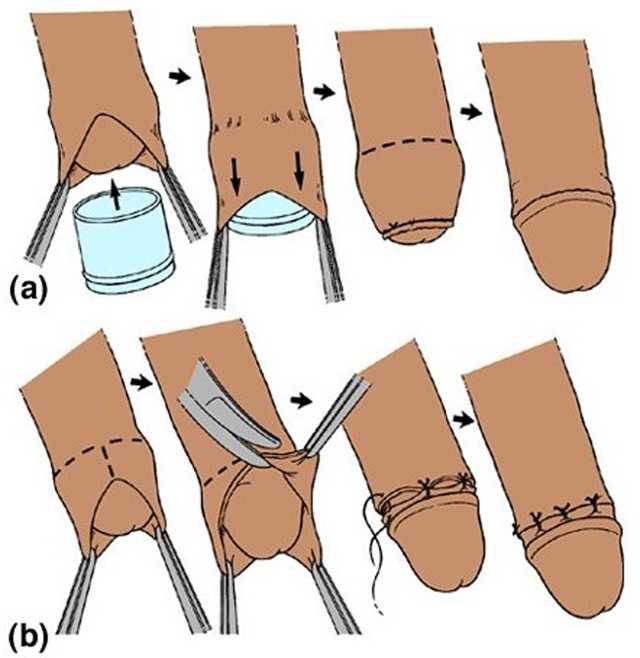 Keep it clean with soap and water to reduce the risk of problems or infections. When your son gets older, his foreskin will separate from the tip of his penis. This is called retraction. It happens at different times for different boys. Most boys can retract their foreskin by the time they are 5 years of age. Don’t try to force the foreskin to retract before it is ready. This can damage the penis and cause pain and other problems. Once the foreskin is ready to retract, you can teach your son how to gently pull the foreskin back and clean the skin underneath. He should wash beneath his foreskin every day while bathing or showering.
Keep it clean with soap and water to reduce the risk of problems or infections. When your son gets older, his foreskin will separate from the tip of his penis. This is called retraction. It happens at different times for different boys. Most boys can retract their foreskin by the time they are 5 years of age. Don’t try to force the foreskin to retract before it is ready. This can damage the penis and cause pain and other problems. Once the foreskin is ready to retract, you can teach your son how to gently pull the foreskin back and clean the skin underneath. He should wash beneath his foreskin every day while bathing or showering.
Things to consider
Studies have shown some limited health benefits of circumcision.
- It offers some limited benefit in preventing urinary tract infections (UTIs) in infants. Overall, UTIs are not common in circumcised or uncircumcised males.
- Newborn circumcision also offers some benefit in preventing cancer of the penis in adulthood.
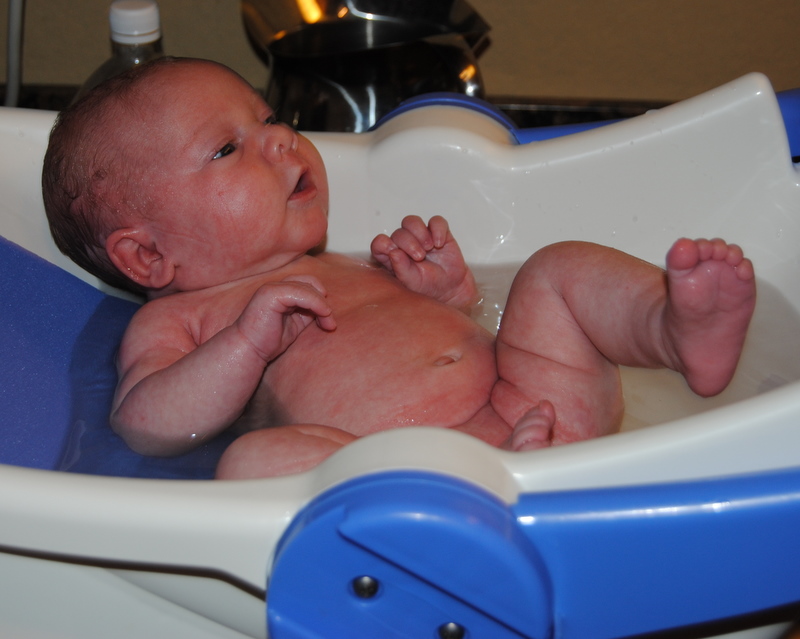 However, this cancer is rare in all men, whether or not they have been circumcised.
However, this cancer is rare in all men, whether or not they have been circumcised. - Circumcision may reduce the risk of certain sexually transmitted infections (STIs). Know that preventing STIs has more to do with a man’s sexual practices (for example, using condoms, limiting the number of sex partners) than with whether or not he is circumcised.
Like any surgical procedure, circumcision does have some risks. However, the rate of problems after circumcision is quite low. Bleeding and infection in the circumcised area are the most common problems. Both of these can be treated by your doctor.
When to call your doctor
After the circumcision, you may notice a small amount of blood on your baby’s diaper. If the bloodstain is larger than the size of a quarter, call your doctor right away. You should also call your doctor if:
- The wound doesn’t stop bleeding.
- Your baby doesn’t have a wet diaper within 6 to 8 hours after the circumcision.
- Redness and swelling around the tip of the penis doesn’t go away after 3 to 5 days, or it gets worse.

- The yellow discharge or coating on the tip of the penis doesn’t go away after 7 days.
- A Plastibell device was used and it doesn’t fall off within 10 to 12 days.
- Your baby has a temperature of 100.4°F or higher.
Questions for your doctor
- What are some reasons I should have my baby circumcised?
- What are some reasons I should not have my baby circumcised?
- Will my baby feel any pain during circumcision?
- Before circumcision, will you apply the anesthetic as an injection or a cream?
- How will I know if my baby’s penis is infected?
- What soap do you recommend for washing the bandaged area?
Resources
National Institutes of Health, MedlinePlus: Circumcision
Copyright © American Academy of Family Physicians
This information provides a general overview and may not apply to everyone. Talk to your family doctor to find out if this information applies to you and to get more information on this subject.
The Circumcision Decision | Patient Education
If you give birth to a boy, you will be asked if you'd like him circumcised. This is a matter to be considered carefully before the baby is born, while you have time to think about it and discuss it with your care provider and pediatrician.
At birth, boys have skin that covers the end of the penis, called foreskin. Circumcision is the surgical removal of this foreskin, exposing the tip of the penis. It is usually done in the first few days of life before the baby leaves the hospital. A baby must be stable and healthy to be circumcised.
It Is Your Decision
The American Academy of Pediatrics considers circumcision a choice for parents to make. Some parents choose circumcision for religious or cultural reasons. It is important to consider the pros and cons, how the surgery is performed and the potential complications.
Not all insurance companies pay for the procedure. If you plan to circumcise your son, you should contact your insurance provider for information about coverage.
Medical Reasons Parents Might Choose Circumcision
Research suggests that there may be some medical benefits to circumcision, including:
- A slightly lower risk of urinary tract infection (UTI). A circumcised boy has about one in 1,000 chance of getting a UTI in the first year of life. A baby who is not circumcised has a one in 100 chance of getting a UTI in the first year of life.
- A slightly lower risk of getting sexually transmitted diseases (STDs), including HIV.
- A lower risk of cancer of the penis. However, this is very rare in both circumcised and uncircumcised men.
- Prevention of foreskin infections.
- Prevention of phimosis, a condition in which it is impossible to pull back the foreskin.
Continue reading
Medical Reasons Parents Might Choose Not to Circumcise
- Risks of circumcision surgery, although rare, include bleeding, infection and injury to the penis or urethra.
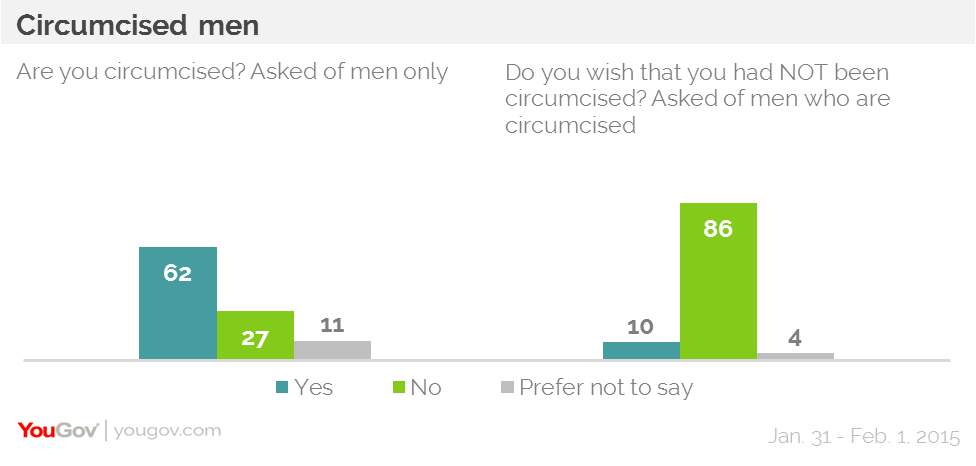
- The foreskin protects the tip of the penis. When the foreskin is removed, the tip may become irritated and cause the opening of the penis to become too small. This can cause urination problems that may need to be corrected by an operation.
- The foreskin has more nerve endings than the glans, or sensitive tip of the penis, and its removal decreases sensitivity to touch.
- Almost all uncircumcised boys can be taught proper hygiene that can lower the chance of getting infections, cancer of the penis and sexually transmitted diseases.
The Procedure
Circumcision is usually performed before your baby goes home from the hospital. Like all surgery, circumcision is painful. To relieve pain, anesthetic is given to numb the area. About one hour before the procedure, a numbing cream is placed on your baby's penis.
Right before the procedure, the doctor injects a local anesthetic at the base of the penis. The penis and foreskin are cleaned. A clamp is attached to the penis and the foreskin is removed by scalpel.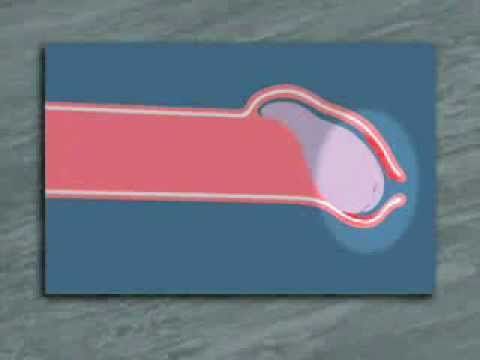 The procedure takes just a few minutes. You can be with your baby during the operation if you choose.
The procedure takes just a few minutes. You can be with your baby during the operation if you choose.
Recovery
A nurse or doctor will give you directions for caring for your baby after circumcision. Clean the penis as you would with any diaper change. Apply the provided ointment to the penis with each change so that the penis does not stick to the diaper. It takes about one week to 10 days for the penis to fully heal. Call your doctor if you notice any signs of infections such as redness, swelling or foul-swelling drainage.
Caring for an Uncircumcised Penis
A nurse or doctor will give you directions for caring for an uncircumcised penis as part of routine baby care. Wash the outside of the penis with soap and water. Do not attempt to pull back the foreskin. By the time your son is about 3 or 4 years old, the foreskin will begin to pull back and your son can be taught to wash the head of the penis and inside the fold of the foreskin. Pull the foreskin back over the head of the penis after washing.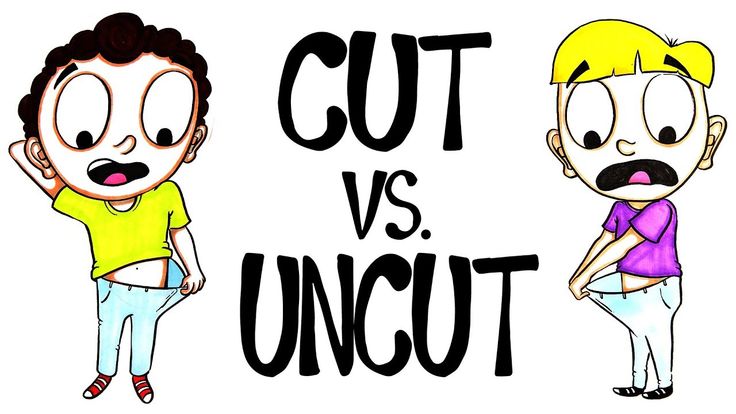
What is circumcision and do you need it?
How does circumcision affect the ability to have children? Is it true that circumcision reduces the risk of STIs? What is important to know about this procedure?
Vera Ermakova
Tags:
Man's health
Hygiene
Getty Images
Circumcision is the removal of the foreskin, the small skin that covers the head of the penis. From a religious rite, circumcision has long turned into a medical procedure, which is often carried out simply for hygiene reasons. Although circumcision is not so common in our country, we have collected the most popular questions about this procedure.
Do not self-medicate! In our articles, we collect the latest scientific data and the opinions of authoritative health experts. But remember: only a doctor can diagnose and prescribe treatment.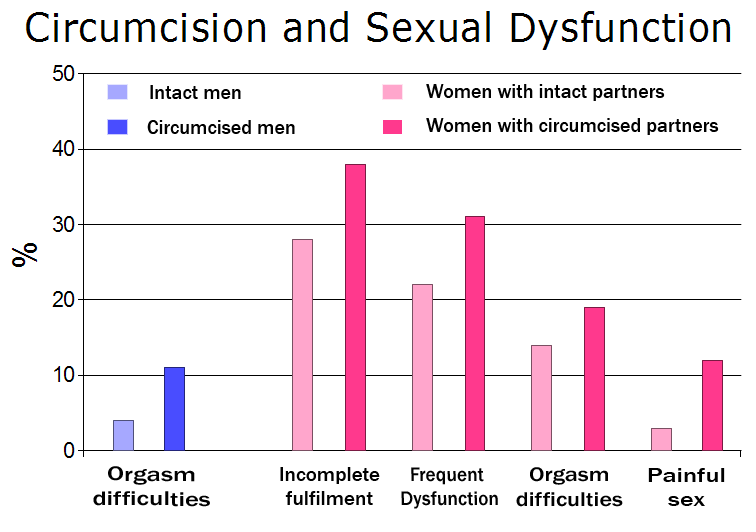
Is there a functional difference between circumcised and uncircumcised penis?
In short, no. The difference is rather aesthetic, and it is especially noticeable if the penis is at rest. On an uncircumcised one, it is difficult to notice the head and opening of the urethra, but on a circumcised one, they are visible not only in an erection.
Is circumcision good for men's health?
Doctors believe circumcision slightly reduces the risk of urinary tract infections and sexually transmitted infections. At the same time, the procedure itself can lead (although this happens quite rarely) to complications such as bleeding, infections, and even necrosis of the penis.
In 2012, the American Academy of Pediatrics released a statement stating that despite the potentially rare complications of circumcision, the health benefits of newborn male circumcision outweigh the risks.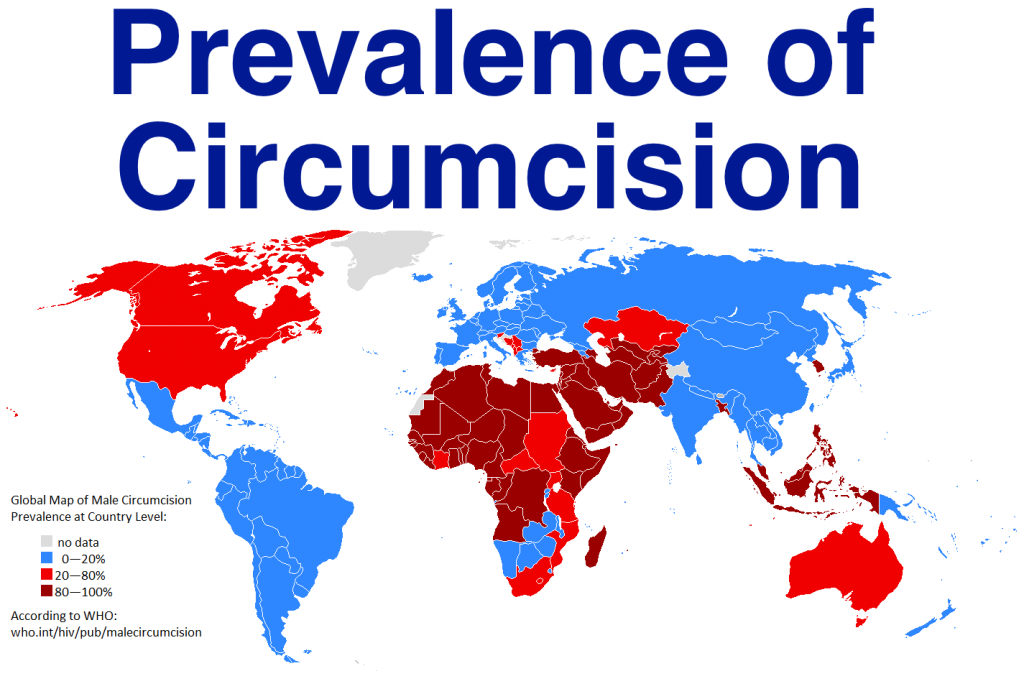
Is circumcision more hygienic?
Yes. If this procedure has not been carried out, smegma may form under the foreskin - a substance that resembles cottage cheese in color and consistency and has no smell. However, if you wash this area daily and do not forget to rinse the glans penis, the problem will be solved.
Does circumcision make the penis less sensitive?
Unfortunately, yes. During the procedure, many nerve endings of the penis are removed along with the skin. Thus, a study conducted in 2007 confirmed that, on average, the head of an uncircumcised penis is more sensitive to touch than the head of a circumcised one. However, another study conducted in 2016 confirmed that the level of pleasure from sex in circumcised and uncircumcised men is about the same.
Does circumcision affect the ability to conceive?
No, absolutely none. The foreskin is in no way connected with spermatozoa, and the ability to conceive does not depend on its presence.
The foreskin is in no way connected with spermatozoa, and the ability to conceive does not depend on its presence.
Male circumcision: context, criteria and culture (Part 1)
After male circumcision and its relationship to HIV infection made headlines and sparked heated debate around the world, the first three-part special series, www.unaids.org for more details on the historical, traditional and increasingly social reasons for male circumcision in various parts of the world.
Male circumcision is one of the oldest and most widespread surgical procedures, traditionally a sign of cultural identification or religious importance.
Historically, male circumcision was practiced by the ancient Semitic peoples, including the Egyptians and peoples of the Jewish faith; The very first inscriptions depicting circumcision have been found in an Egyptian temple and in wall paintings dating back to around 2300 BC.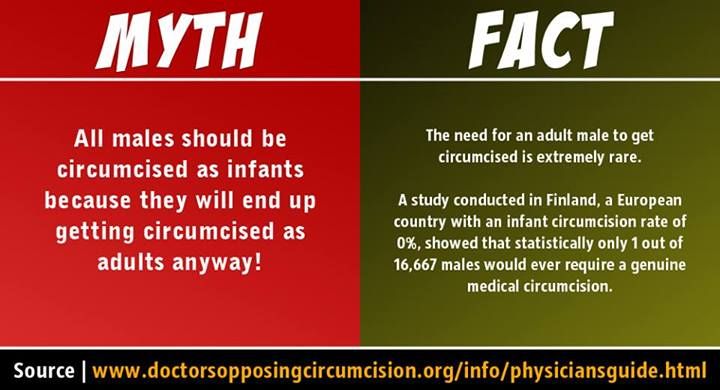
As surgery progressed in the 19th century and population mobility increased in the 20th century, this procedure was introduced to some cultures that did not previously practice circumcision, either for health or social reasons.
According to current estimates, about 30% of all men in the world - about 670 million men - are circumcised. Of these, about 68% belong to the Islamic faith, less than 1% to the Jewish faith, and 13% are non-Muslim and Jewish Americans.
“With recent evidence that male circumcision significantly reduces the risk of HIV infection for men, this practice is receiving renewed attention as the world tries to understand what it will mean in terms of HIV prevention,” said Chief UNAIDS Scientific Adviser Dr Katherine Henkins. "Analysis of the determinants of male circumcision and the acceptability of the practice in other communities allows us to better see how these latest research findings can be further exploited.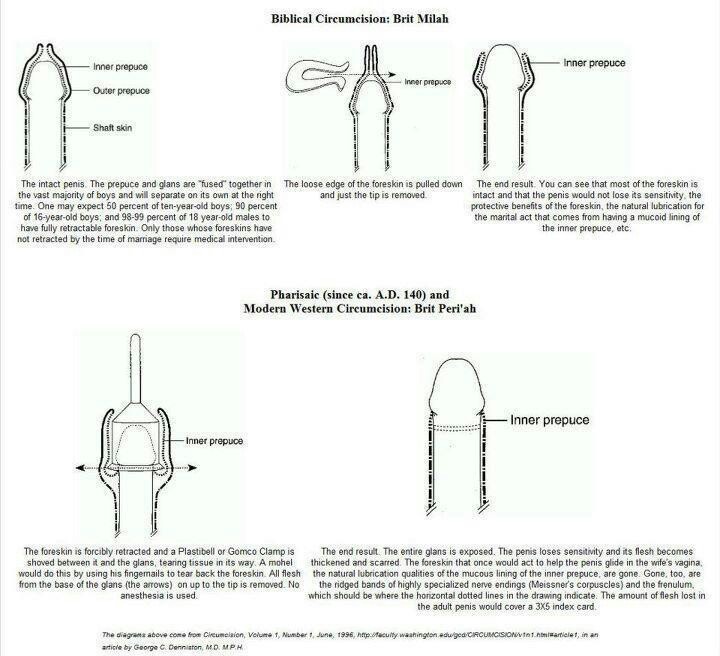 "
"
Religious practice
In the Jewish religion, boys are traditionally circumcised on the eighth day of life, unless there are medical contraindications. The justification given in the Jewish holy book Torah is that a covenant was established between Abraham and God, the outward sign of which is the circumcision of all male Jews. The Torah says, “This is My covenant, which you must keep between Me and between you and among your descendants after you: that all male sex be circumcised among you” (Genesis 17:10). Male circumcision is still an almost universal practice among the Jewish people.
The largest religious group practicing male circumcision is Islam. As followers of the Abrahamic faith, Islamic nations practice circumcision as their relationship with God; they call this practice tahera, meaning purification. After the global spread of Islam from the 7th century AD. male circumcision became widely practiced among other peoples who had not previously used this practice.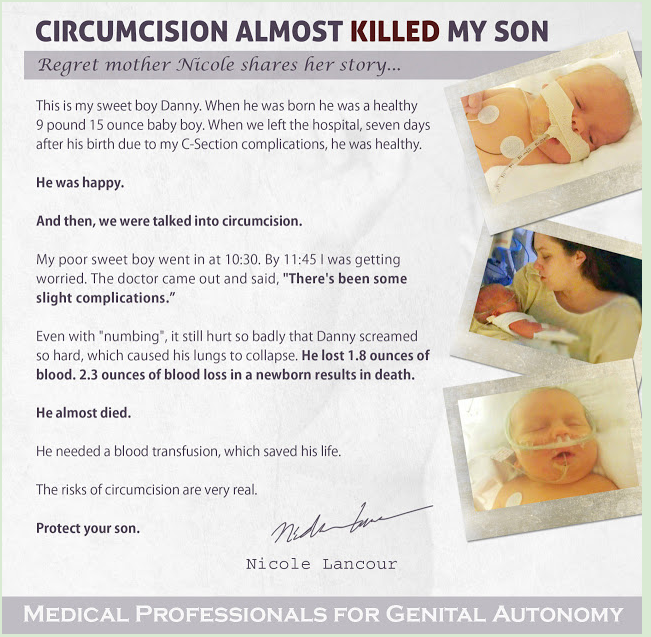 There is no clearly prescribed age for circumcision in Islam, although the Prophet Muhammad recommended circumcision at an early age and is said to have circumcised his sons on the seventh day after birth. Many Muslims perform this ceremony on this day, although a Muslim can be circumcised at any age from birth to puberty.
There is no clearly prescribed age for circumcision in Islam, although the Prophet Muhammad recommended circumcision at an early age and is said to have circumcised his sons on the seventh day after birth. Many Muslims perform this ceremony on this day, although a Muslim can be circumcised at any age from birth to puberty.
Coptic Christians in Egypt and Orthodox Christians in Ethiopia, the two oldest forms of Christianity in existence, retain many of the traditions of early Christianity, including male circumcision. Circumcision is not prescribed by other forms of Christianity. In the New Testament, St. Paul wrote, “For neither circumcision nor uncircumcision has power in Christ Jesus” (Galatians 5:6), and in the Papal Bull of 1442, the Roman Catholic Church says that male circumcision is optional: "Therefore, all who give praise in the name of a Christian are strictly ordered not to practice circumcision either before or after baptism, because, whether they believe it or not, this rite cannot be observed without losing eternal salvation.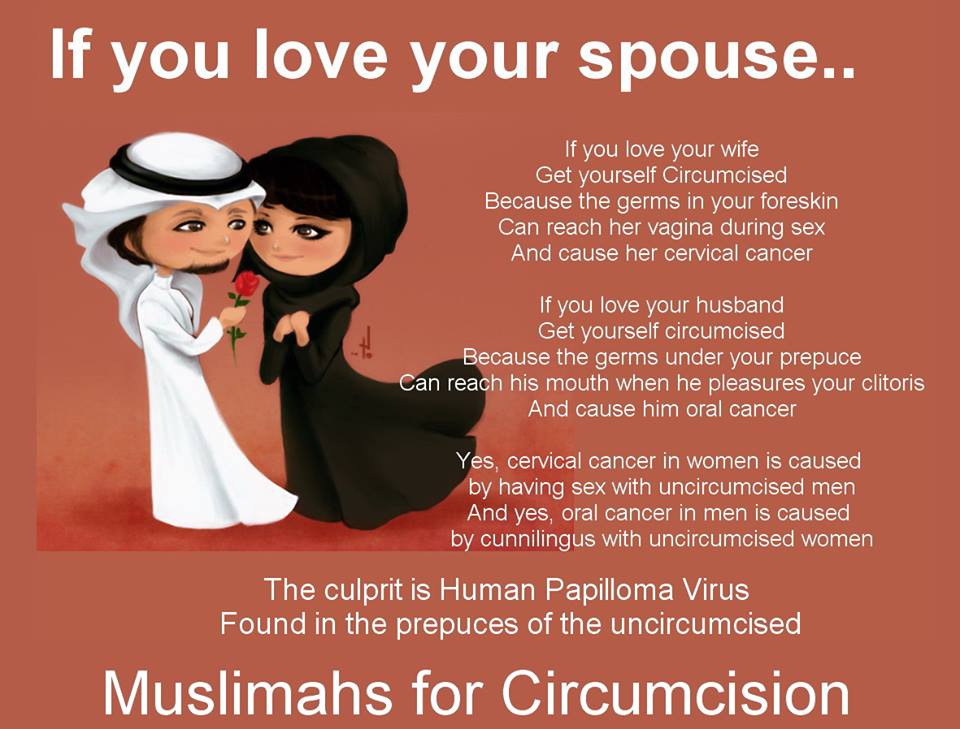 " Focus group discussions on male circumcision in sub-Saharan Africa did not produce a clear consensus on the compatibility of male circumcision with the Christian faith. Some Christian churches in South Africa oppose the practice as a pagan ritual, while others, including the Nomian Church in Kenya, require circumcision for their members; focus group discussion participants in Zambia and Malawi noted similar beliefs that Christians should practice circumcision because Jesus was circumcised and the Bible teaches the practice.
" Focus group discussions on male circumcision in sub-Saharan Africa did not produce a clear consensus on the compatibility of male circumcision with the Christian faith. Some Christian churches in South Africa oppose the practice as a pagan ritual, while others, including the Nomian Church in Kenya, require circumcision for their members; focus group discussion participants in Zambia and Malawi noted similar beliefs that Christians should practice circumcision because Jesus was circumcised and the Bible teaches the practice.
Ethnic factors
Circumcision has been practiced for other, non-religious reasons for many millennia in sub-Saharan Africa, as well as by many ethnic groups around the world, including the Aborigines and the Mayathecans, Australasians and Australasians. America, the Philippines and eastern Indonesia, and various Pacific islands, including Fiji and the Polynesian Islands.
In most of these cultures, circumcision is an integral part of the rite of passage into manhood, although originally it may have been a test of courage and endurance. “Circumcision is also associated with factors such as masculinity, social cohesion with boys of the same age circumcised at the same time, self-identification, and spirituality,” explains Dr. Hankins.
“Circumcision is also associated with factors such as masculinity, social cohesion with boys of the same age circumcised at the same time, self-identification, and spirituality,” explains Dr. Hankins.
The ethnographer Arnold Van Gennep, in his Rites of Initiation (1909), describes the various initiation rites that are found in many circumcision rituals. They include three stages: separation from ordinary society; the period during which the new initiate undergoes a transformation; and, finally, reintegration into society in a new social role.
“The psychological explanation for this process is that the ambiguity of social roles creates tension, and as a person approaches the stage of transition from child to adulthood, a symbolic new classification is required. This is supported by the fact that many rituals give a specific meaning to circumcision that justifies its purpose in this context,” says Dr. Hankins. For example, some ethnic groups, including the Dogon and Dowayo in West Africa and the Khosa in South Africa, believe that the foreskin is the female element of the male penis, and that its removal (along with passing certain tests) turns the child into a man.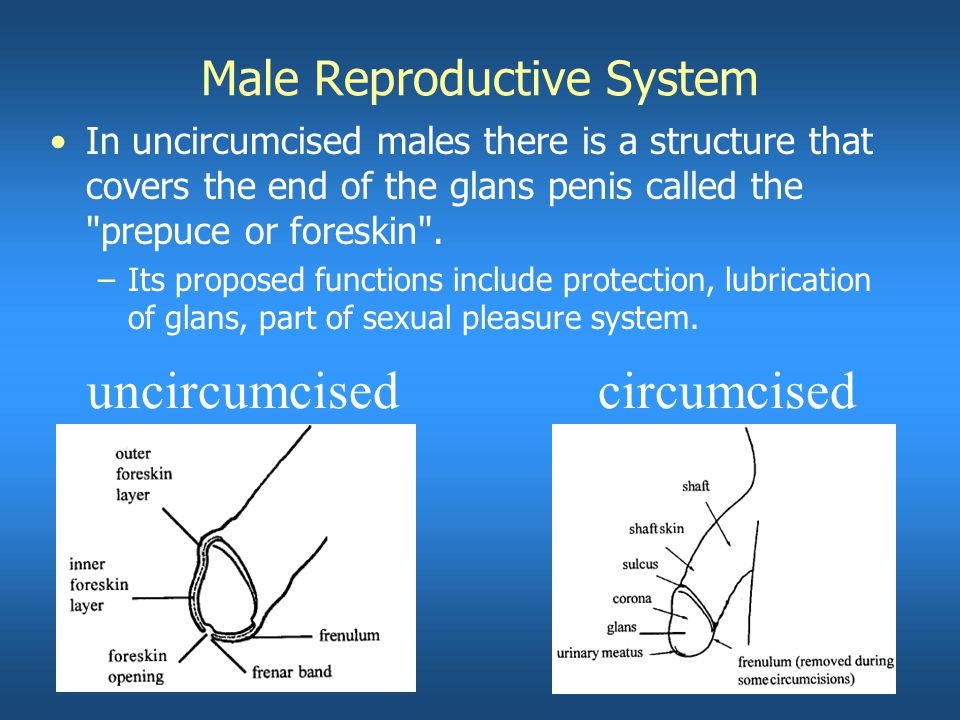
For many ethnic groups, tradition plays an important role. Among ethnic groups in southern Nigeria's Bendel state, 43% of men said their motivation for circumcision was to uphold traditions. In some communities where circumcision is the norm, there is discrimination against uncircumcised men. It is unacceptable for the Lunda and Luwale in Zambia or the Bagisu in Uganda to remain uncircumcised, and as a result forced circumcision of older boys is not uncommon. Among the Khosa tribe in South Africa, uncircumcised men may be subjected to extreme forms of punishment, including intimidation and beatings.
Circumcision as a social status
Social reasons for male circumcision are becoming more common. “Where most boys are circumcised, the desire to conform to the norm is an important motivation for circumcision,” says Dr. Hankins.
A study in Denver, USA, where circumcision is performed shortly after birth, found that parents, especially fathers of newborn boys, cite social causes as a major factor in choosing circumcision (eg, not wanting their son to “look like that”).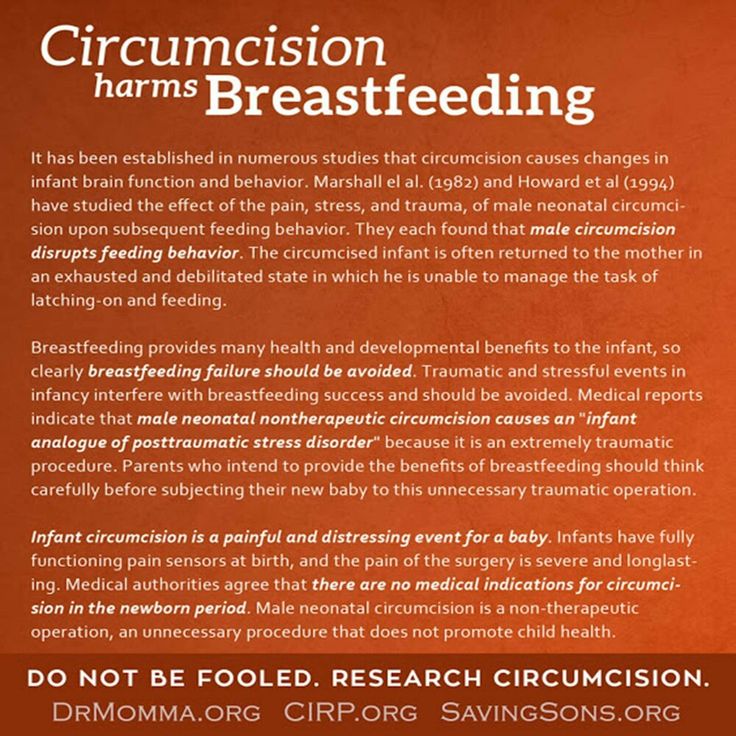 ", as Father).
", as Father).
In the Philippines, where circumcision is almost universal and is usually performed between the ages of 10 and 14, a survey of boys found that two-thirds preferred to be circumcised simply “to avoid being uncircumcised”, and 41% said it was "part of the tradition". Social reasons were also cited as the top reason for circumcision in South Korea, where in one survey, 61% of respondents indicated that they would be laughed at by their peers if they were not circumcised.
The desire to "be one's own" is also a major factor explaining the high rate of circumcision among men immigrating to Israel from other countries where the practice did not exist (mostly from the former Soviet Union).
Socioeconomic factors influence the prevalence of circumcision in a number of countries, especially in countries where the practice has recently emerged, such as English-speaking industrialized countries. When did the practice of male circumcision first appear in Britain in the late 19th - early 20th century, it prevailed mainly among the upper classes of society. In the US, data analysis for 4.7 million circumcised infants between 1988 and 2000 also indicated a significant association with private insurance and higher socioeconomic status.
In the US, data analysis for 4.7 million circumcised infants between 1988 and 2000 also indicated a significant association with private insurance and higher socioeconomic status.
Estimated health and sexual benefits
0054 in the industrialized world was driven by perceptions of improved hygiene and reduced risk of infection.
In a 1983 US study of newborns, mothers indicated that hygiene was the most important factor in choosing circumcision for their sons; in Ghana, circumcision is considered the cleansing of a boy after birth. Increased hygiene was also noted by 23% of 110 circumcised boys in the Philippines and South Korea; The main reasons for circumcision were to "improve sexual hygiene" and to prevent the development of penile cancer and the spread of sexually transmitted infections and HIV (71% and 78%, respectively). In Nyanza Province, Kenya, 96% of circumcised men and 97% of women, regardless of their attitude towards male circumcision, noted that, in their opinion, it is easier for circumcised men to maintain hygiene.
Circumcision can also be motivated by sexual attractiveness and activity. In a survey of boys in the Philippines, 11% indicated that they thought women enjoyed having sex with a circumcised man, and 18% of men in a study in South Korea said circumcision increased sexual pleasure. In Nyanza Province, Kenya, 55% of uncircumcised men thought women enjoyed sex with circumcised men. Likewise, most women thought that sex with circumcised men was more attractive, although it is likely that most women in this province have never had sexual intercourse with a circumcised man. In northwestern Tanzania, young men believed that circumcision increased sexual pleasure for both men and women, and in Westonaria, South Africa, about half of the men indicated that women preferred circumcised men.
Expected increase in demand
Global estimates for 2006 indicate that approximately 30% of men - about 670 million - are circumcised.
With recent research showing that circumcised men have a much lower risk of contracting HIV, demand for safe and affordable circumcision is expected to increase rapidly.
“Because male circumcision is currently considered effective in reducing the risk of HIV infection, men and women must be properly understood that this procedure does not provide complete protection against HIV infection,” said Dr. Hankins, emphasizing that these issues will be addressed during an international consultation on Male Circumcision and HIV Prevention: Implications for Policy and Programmes, to be held in Montreux on 6-8 March 2007. “Male circumcision should be seen simply as part of a comprehensive HIV prevention package that includes the correct and consistent use of male and female condoms, reducing the number of sexual partners, delaying sexual initiation, and abstaining from penetrative sex. Just as combination treatment is the best strategy for treating HIV, combination prevention is the best strategy to avoid getting or transmitting HIV,” she added.

